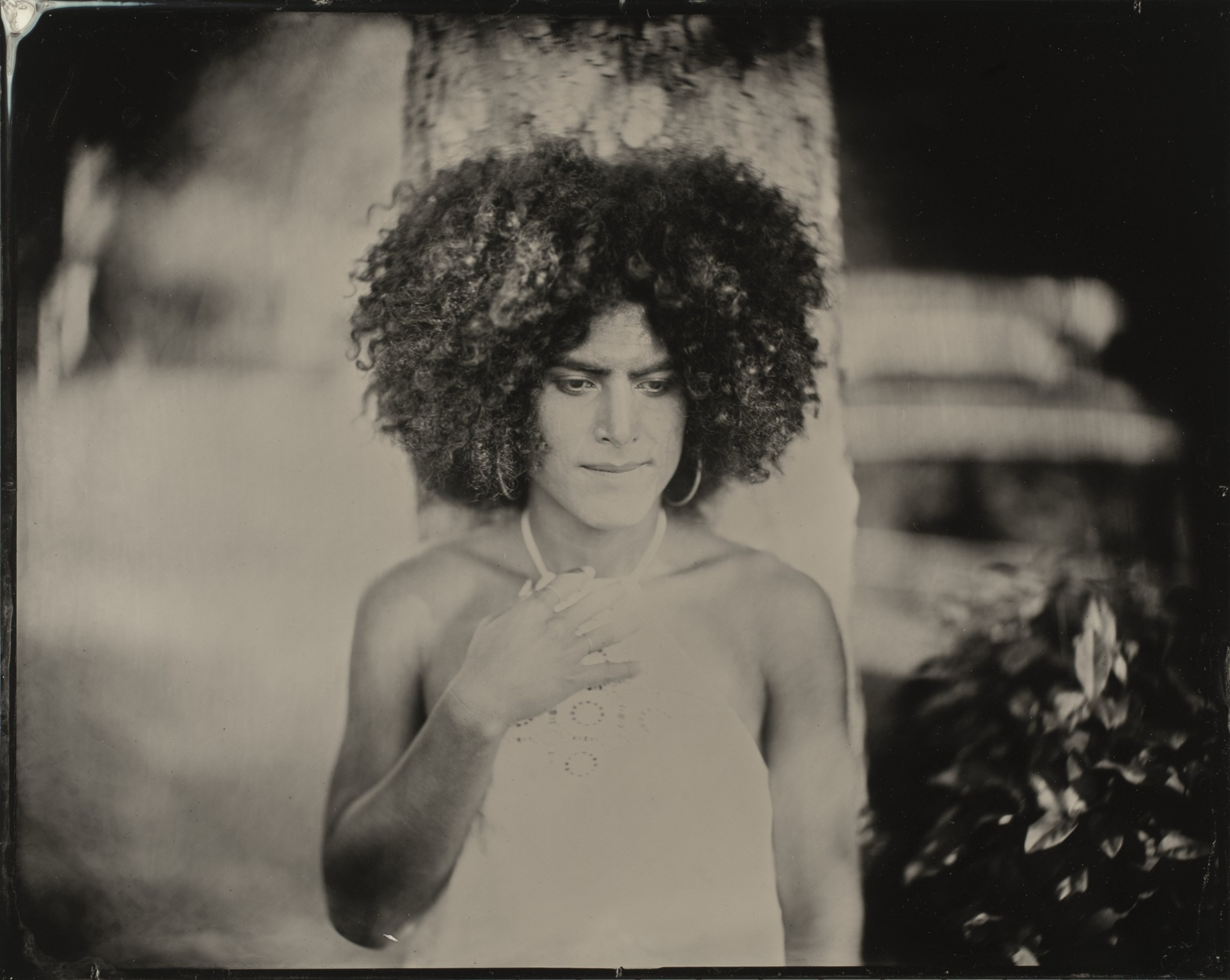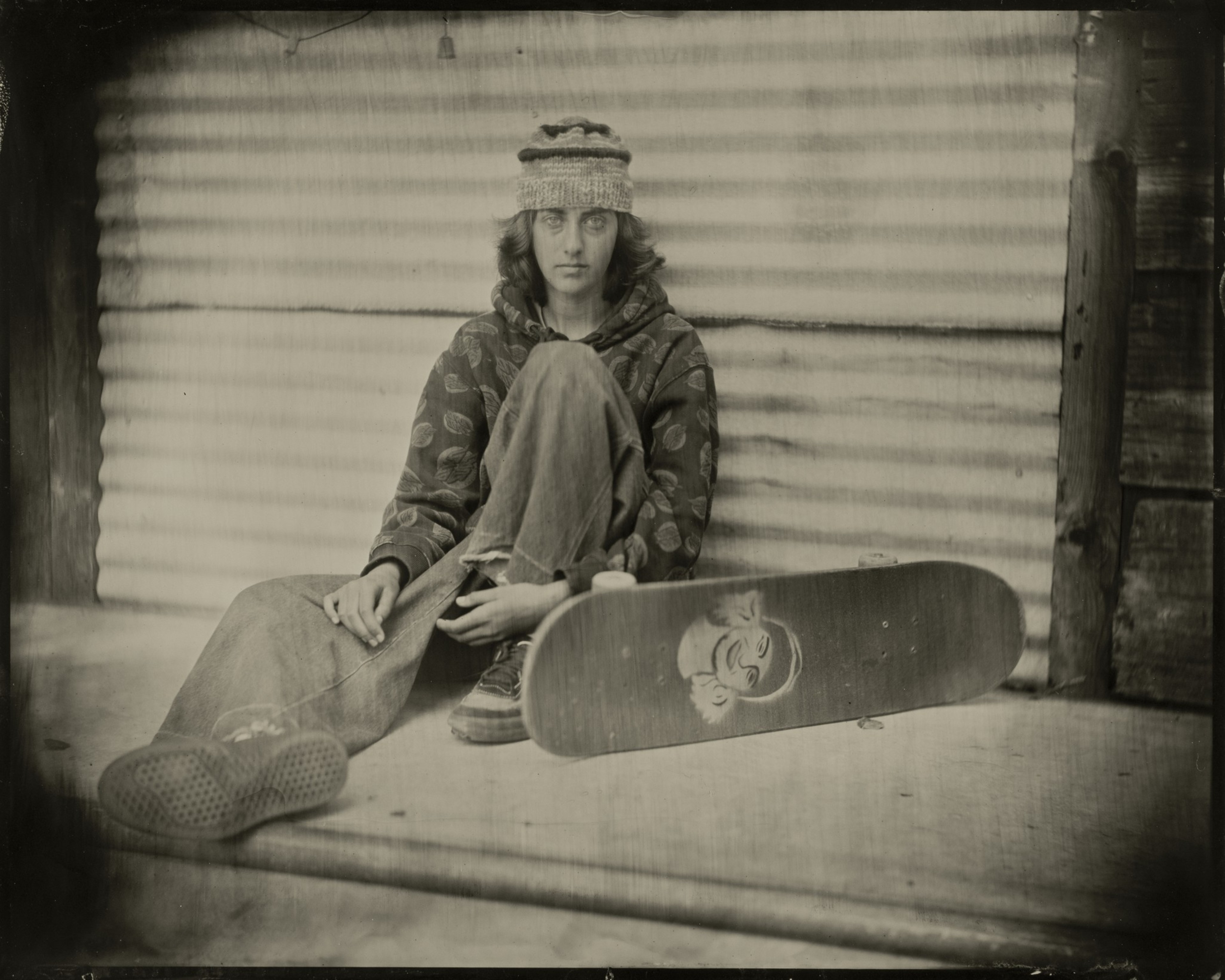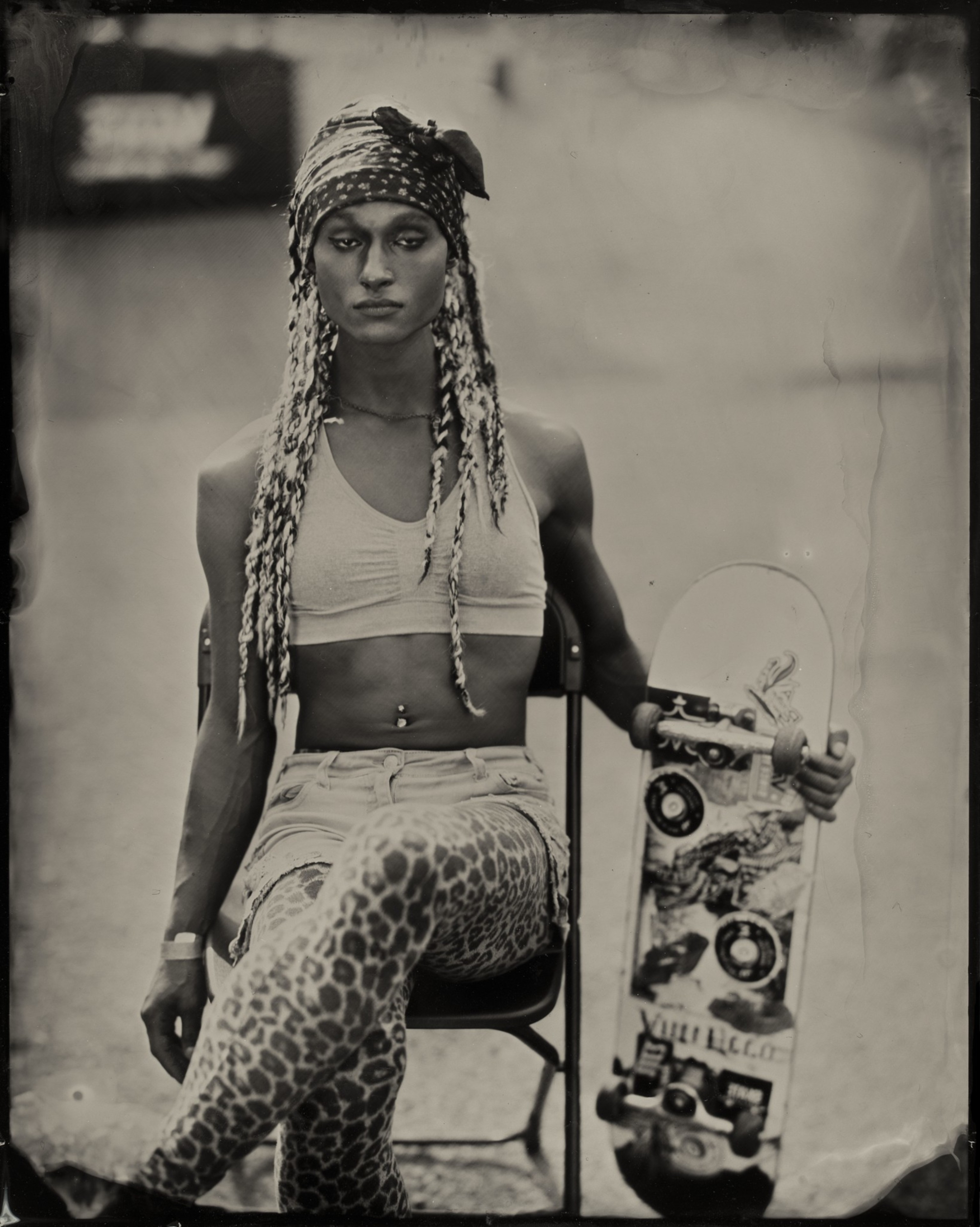The Wide Shot celebrates the work of Bay Area photographers, showcasing their latest projects and the behind-the-scenes stories of how they got the shots.
When Jenny Sampson started photographing skateboarders in 2010, she wasn’t just chasing action shots — she was chasing a feeling. It was a powerful sight that jolted her: the rare presence of girls navigating a world dominated by boys. That spark ignited a deeper calling. In 2017, everything clicked when she met a group of female skaters in Emeryville.
Armed with a vintage camera and a portable darkroom, Sampson began capturing them using the 19th-century tintype process, in which an image is imprinted onto metal coated in lacquer or enamel using a “photographic emulsion (opens in new tab).” Using this antique method, Sampson transforms fleeting skate moments into nostalgic, silver-toned portraits that demand attention.
What started as a curiosity evolved into a movement of its own. Sampson’s “Skater Girls” series doesn’t just document; it mythologizes. Her subjects, young women and nonbinary skaters, appear as fierce revolutionaries — not unlike the Civil War soldiers who populated the tintypes of yore.
Sampson’s work reframes the visual culture of skateboarding — celebrating the outsiders who are reshaping the sport’s identity with every pop shuvit, kickflip, and frontside 180. Through her lens, rebellion meets reverence, and a new generation of skaters takes center stage.
Born and raised in San Francisco, Sampson is part of the East Bay Photo Collective, a nonprofit in Oakland. She also teaches photography and writes and shoots for the skate and surf community WithItGirl. Here she presents images from her project “Skater Girls.”
This interview has been edited for content and clarity.
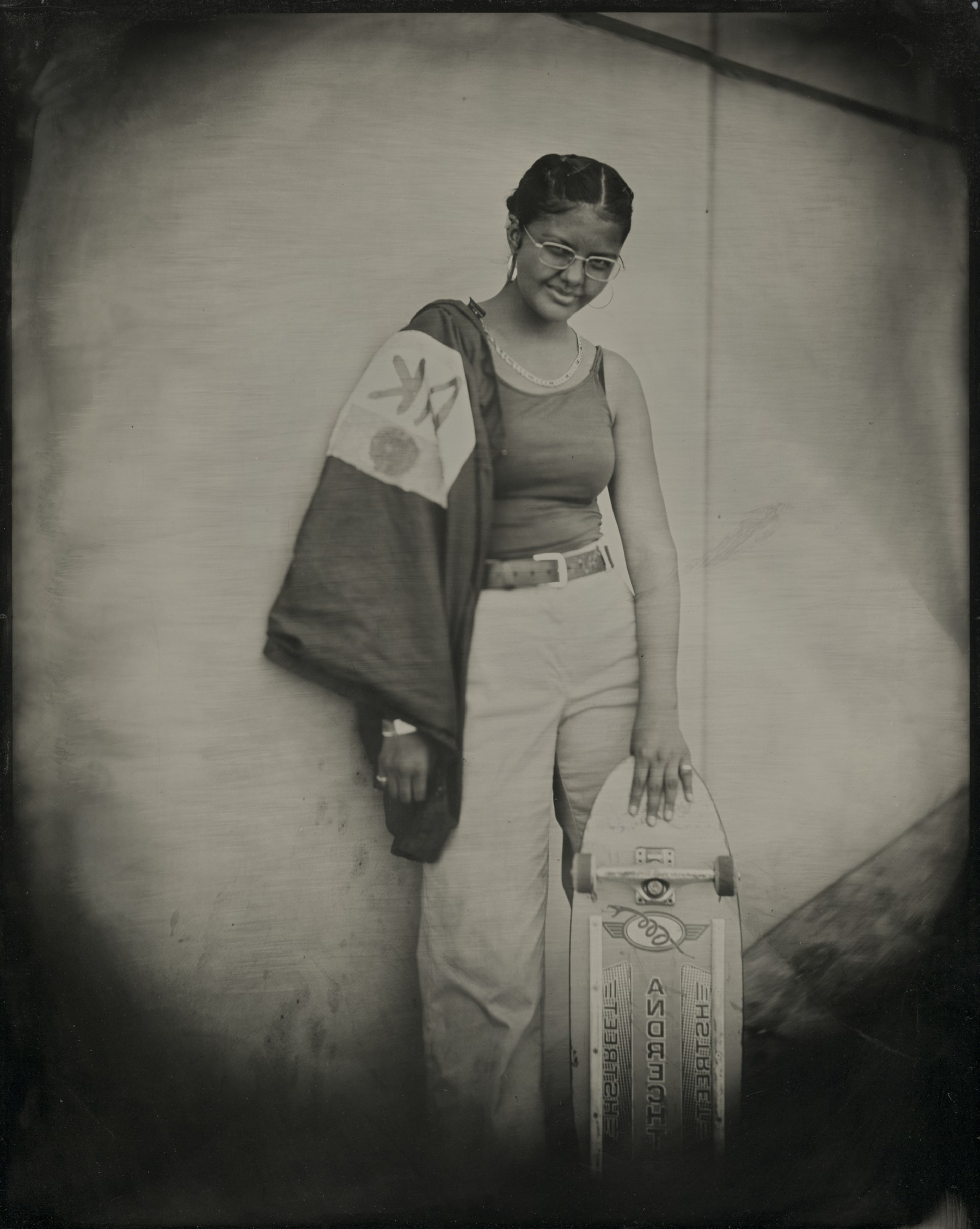
How did you get started shooting female skateboarders?
I began photographing skateboarders in 2010 after I had completed building my portable darkroom for making tintypes in the field. It was an accidental series — when I went to the Berkeley skate park to test out my portable setup, I had no inkling that this would be the beginning of a 15-plus-year body of photographic work, two books and exhibitions. I really fell for the skaters, the culture, and for making this work.
During the many years of going to skate parks, setting up my equipment and chemistry, and hoping for the best — finding, approaching, and photographing each skater — I was always stoked to see a girl skater.
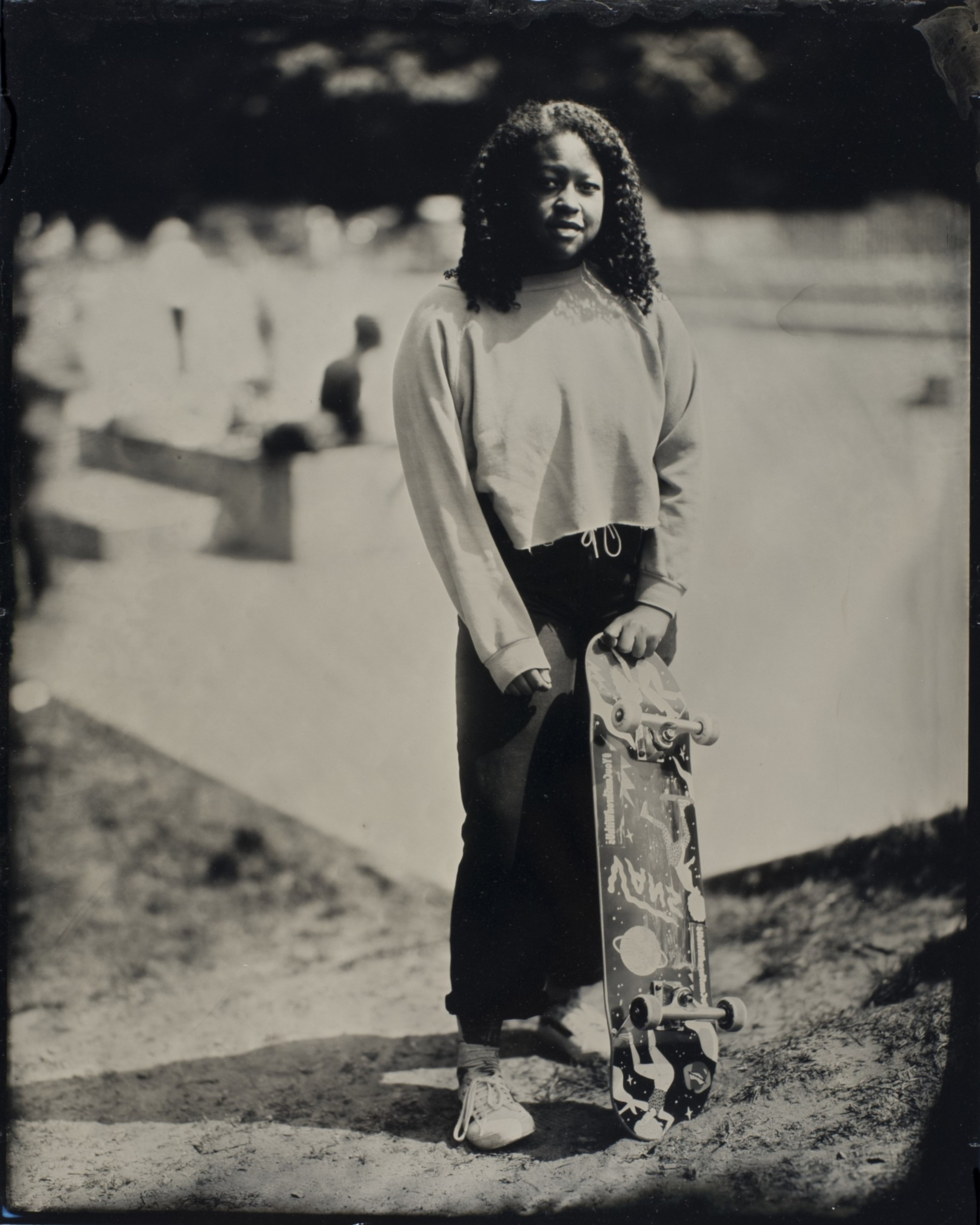


One day in January 2017, nearing the deadline for images for my “Skaters (opens in new tab)” book, I saw a gaggle of girls at the Emeryville skate park. It was, in fact, the first gaggle of girls I had seen, and I was stoked. I interrupted them, introduced myself, and asked if I could photograph them.
They smiled and said, “Yeah!”
This gaggle of girls were the people who first told me about nonprofit organization Skate Like a Girl. In that very moment, I seriously freaked the fuck out. I was ecstatic! I knew that as soon as I was finished with the “Skaters” book, I would only be photographing girl skaters.
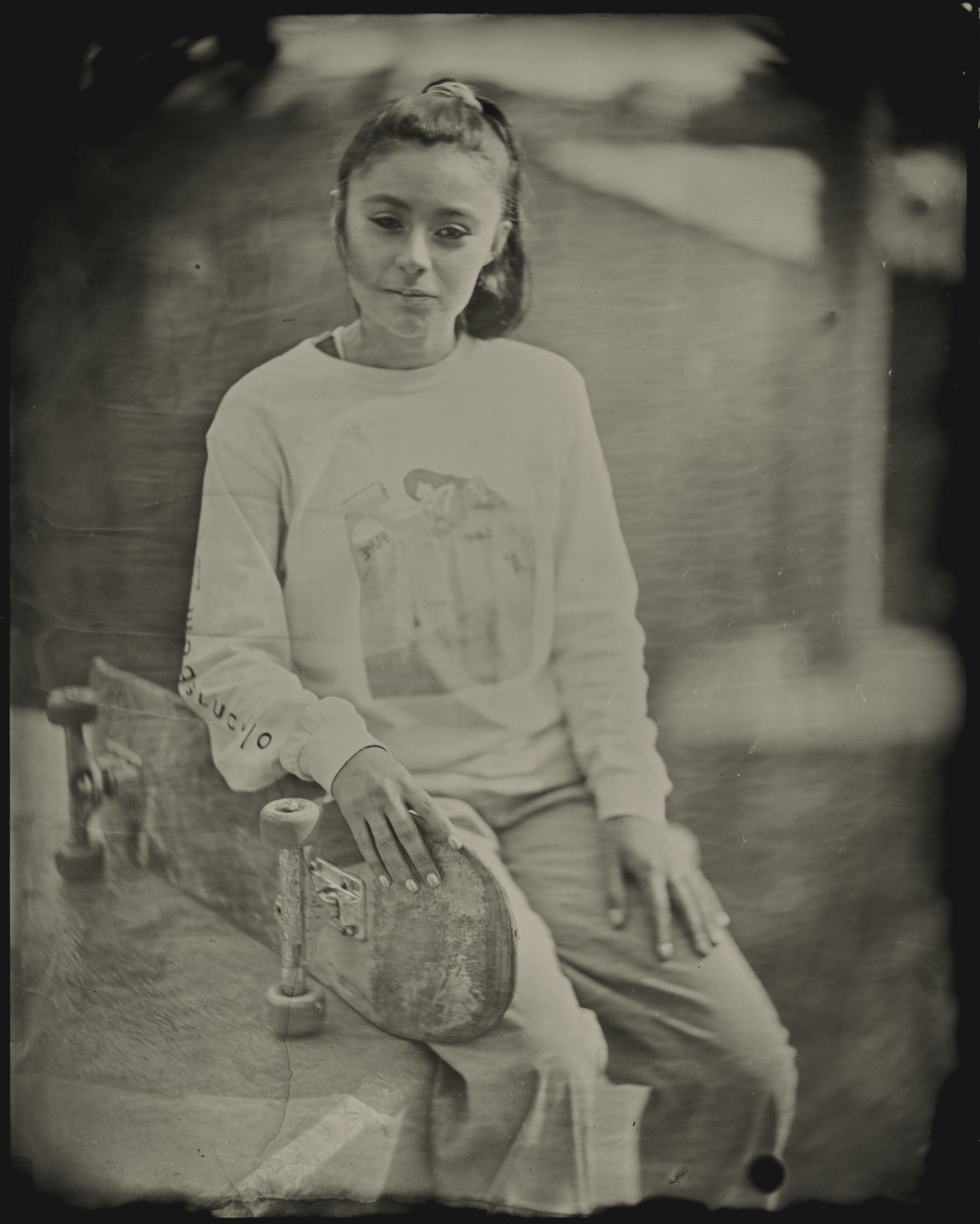
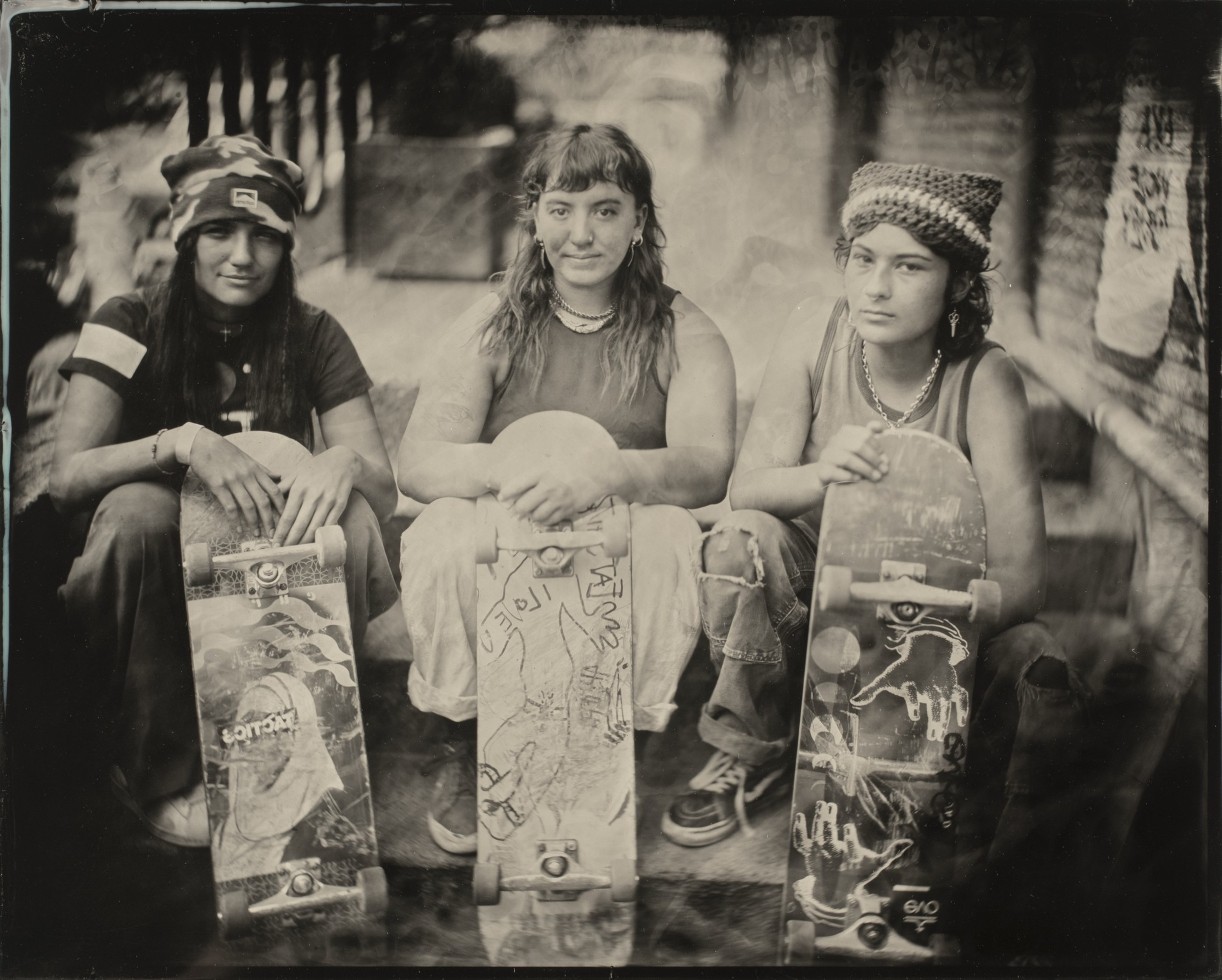
How did discovering Skate Like a Girl change the way you thought about skateboarding?
Once I discovered the girl skate communities, I felt revived.
I observed immense feelings of joy, support, confidence, inclusivity, and excitement, and I was able to feed off of it. I went girls skating events up and down the West Coast. Over the course of a few years, it became clear that the historically male landscape of skateboarding was shifting.
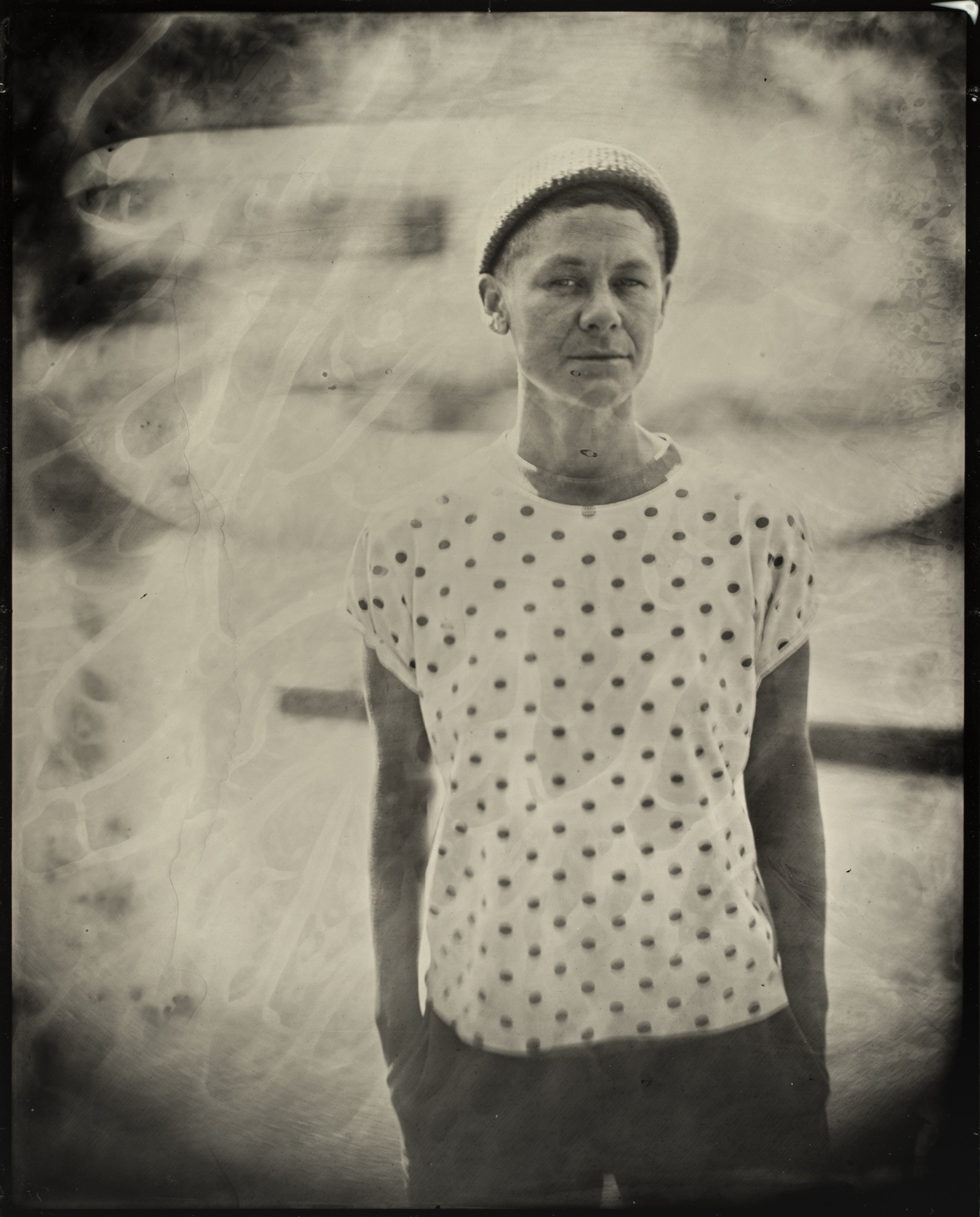
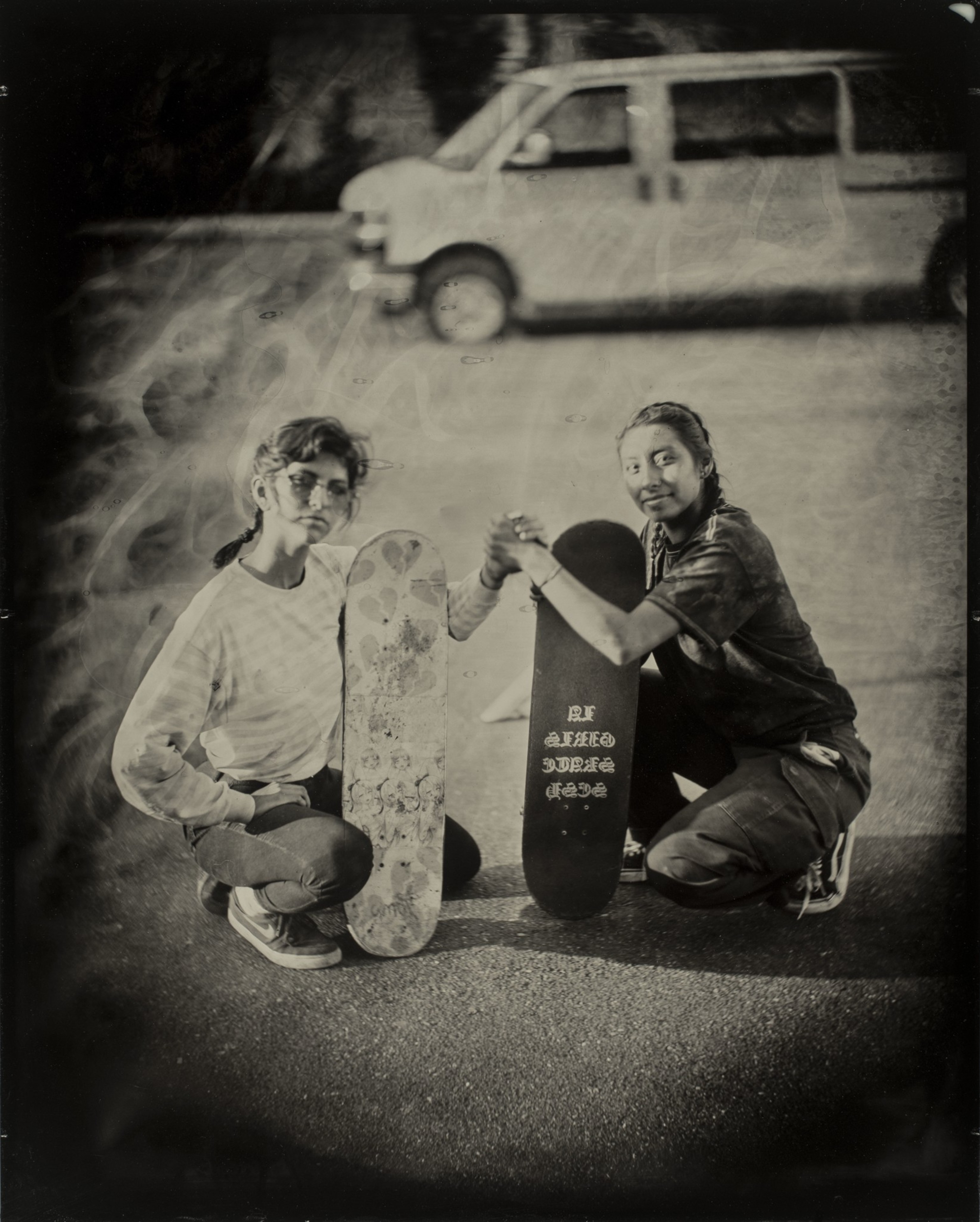
The girls were always there, but their representation had been limited — lack of sponsors, insultingly low purse prizes at competitions (not to mention the exclusion for years from these competitions). This all despite the bold and determined voices and actions of skaters like Cara-Beth Burnside, Mimi Knoop, Jen O’Brien, Elissa Steamer, and Vanessa Torres, among others in the ’90s.
And then came the 2020 Olympics, when skateboarding was included for the first time. Now girl skaters were appearing on the covers of Thrasher, The New York Times, Vogue. They were being seen. My “Skater Girls” series began to include trans and nonbinary skaters. I wanted to document a wider representation of skaters. I wanted to treat all “my” skaters as skaters. Not guy skaters and girl skaters — just skaters who now happened to only be girls or trans or nonbinary.

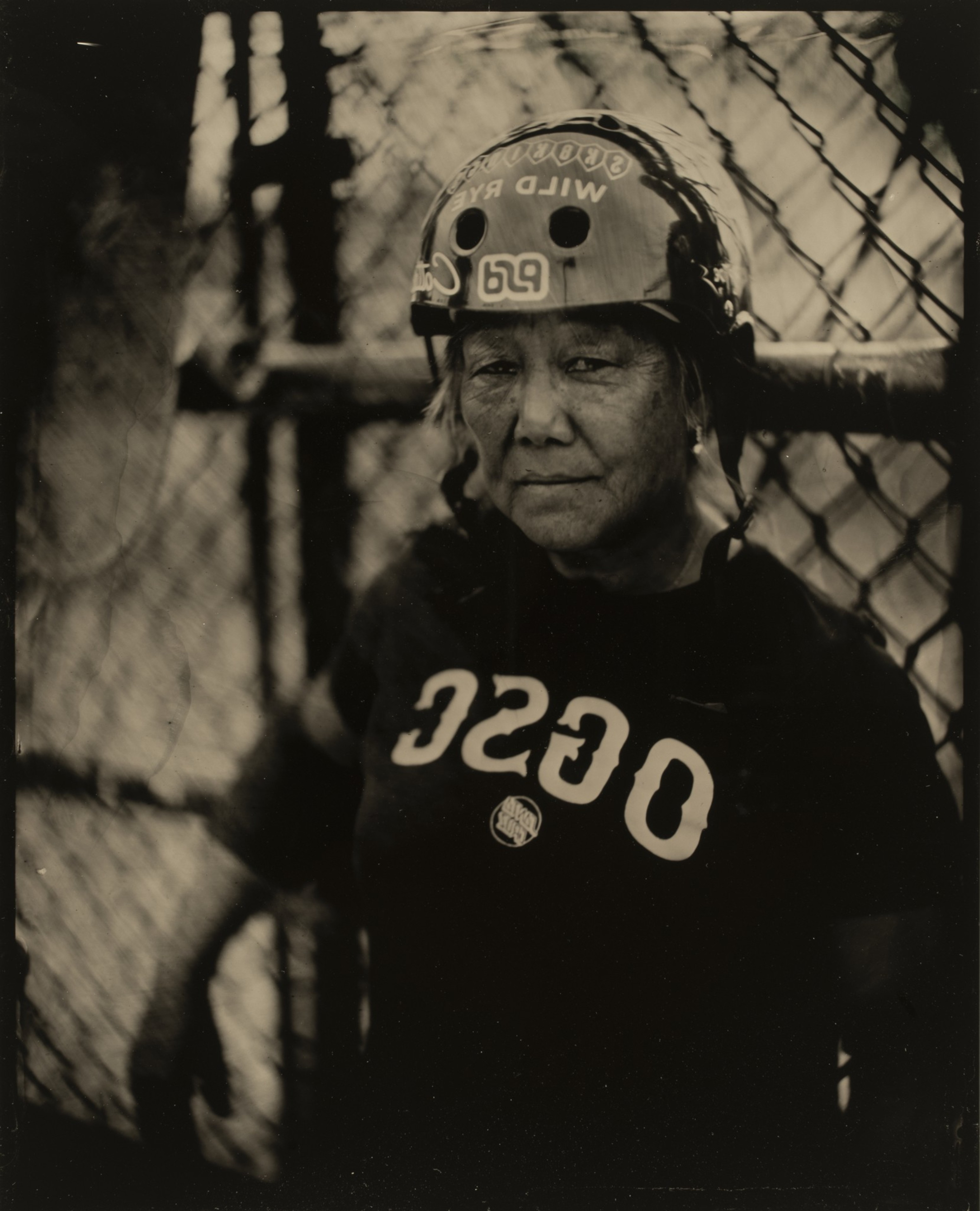
Can you share a story behind one of your favorite images from this series?
One weekend in 2018, I was photographing at the women’s skateboarding event Exposure in Encinitas, when a mother asked if her 3-year-old daughter, who was new to skating, could get a portrait the next day.
My age limit for a decent tintype portrait is 3, but that is pushing it, because sitters must remain perfectly still for quite a while for this process. Not only are the exposures several seconds long, but using a large-format camera requires sitters to be still for even longer. But I agreed.
The next day, Dani and Vada showed up and told me that they had been practicing sitting still for 30 seconds — with a stopwatch! I posed them in such a way as to help Vada remain still, and I made their portrait. These two both have blue eyes, which always looks kind of cool and creepy, so I knew that was a plus. But until I am developing the tintype in my darkroom, I really don’t know how still my sitters actually are. I exited my darkroom to fix the plate, and called over Dani and Vada to watch the clearing. (This is the coolest and most magical part of the wet-plate collodion process.) It was pretty much perfect. I was damn happy — and so were they.

What challenges or surprises did you encounter while working on this project?
There are so many challenges involved with making a tintype in the field. Temperature, wind, location — let’s call it climate and logistics — these can make or break a tintype session, and everything can be working perfectly, and then one factor can change, which can then magnify the challenges. And just because I’m set up with my equipment and chemistry, there are no promises that I will make a decent portrait, whether for technical reasons or because the subject cannot remain still or for some other unknown reason. Every single tintype portrait I make is a surprise, which is also what makes the work so rewarding.
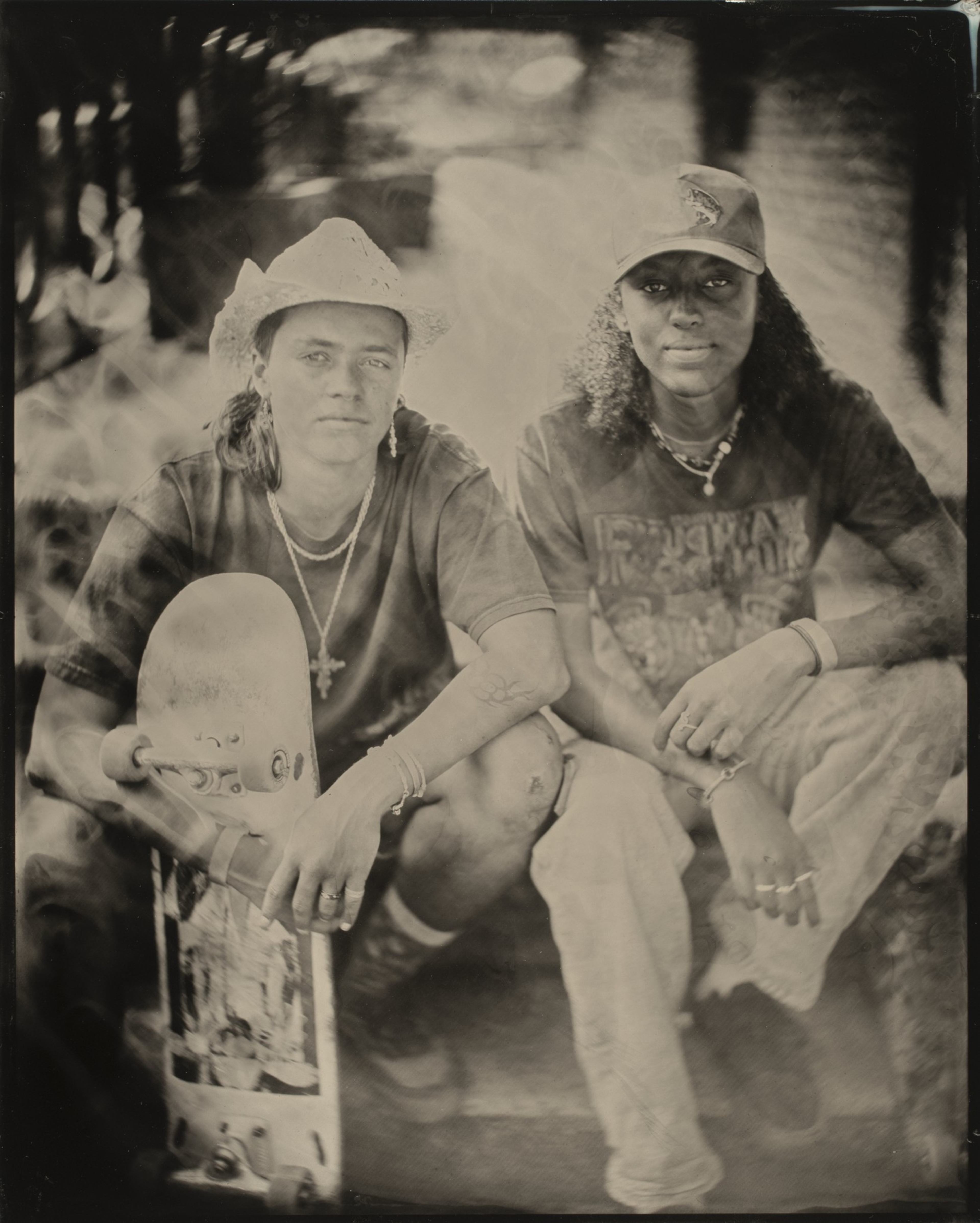
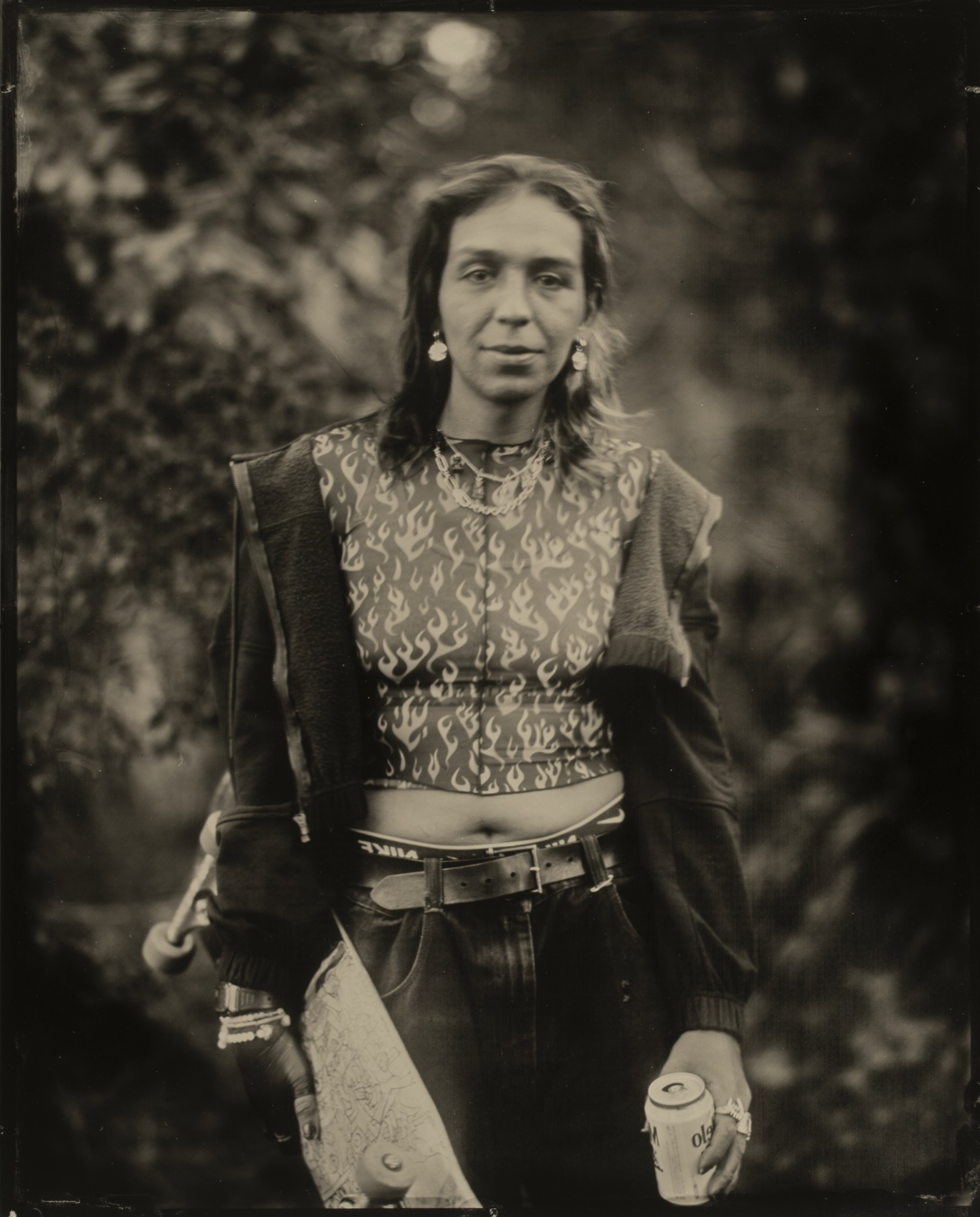
One of the biggest surprises with this series was the degree to which surrounding myself with these folks enriched my life. I witnessed young people who were exceedingly strong, articulate, determined. Multigenerational interactions of pure joy. Honestly, it made me wish I had had this when I was younger.
